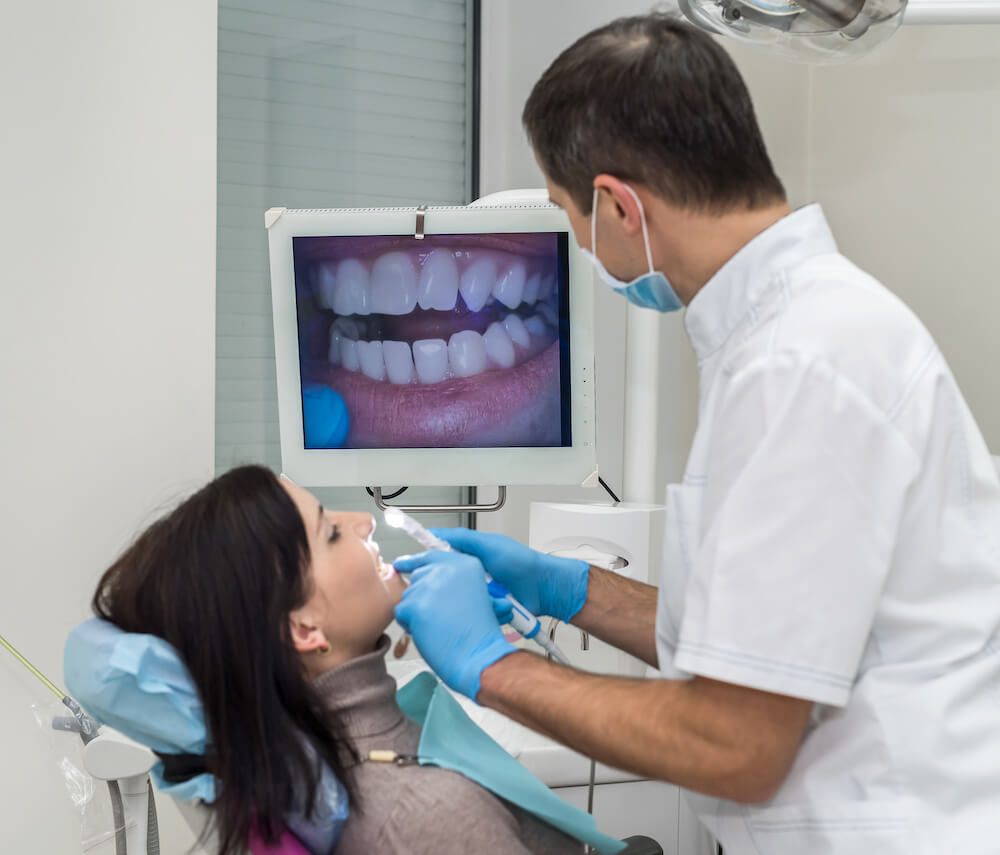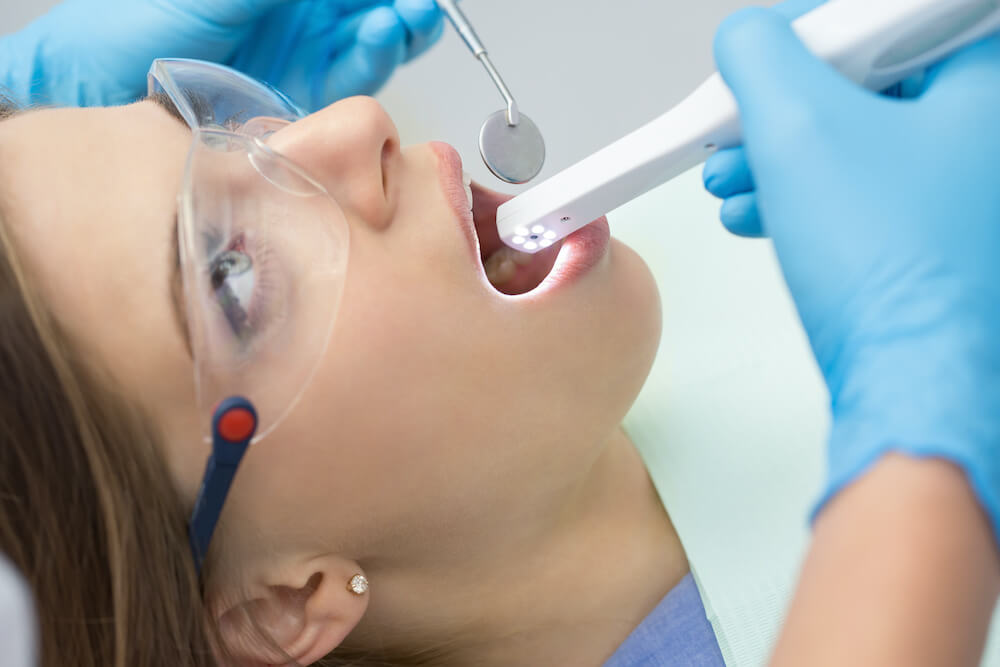Your own teeth may be some of the most difficult things to see with the naked eye. Although your front teeth may be easy to view in a mirror, you probably struggle to see your molars or the backs of your teeth. If you have spent time twisting and turning in front of a mirror trying to see exactly what is causing your discomfort, you understand why a cutting-edge tool to see these areas clearly is so needed.
While dentists have used tiny mouth mirrors for decades to see all areas of your mouth more clearly, they now have a way for you to see exactly what they are seeing. With the intraoral camera, your dentist can show you exactly what he sees so that you have a clearer idea of what is happening in your mouth and how a particular treatment can adequately address any concerns you have.

What Is an Intraoral Camera?
While cameras have existed for decades, the tiny intraoral camera was not used until the early 1990s. Even now, not every dental office has an intraoral camera, and these devices are often seen as cutting-edge technology among many dentists.
An intraoral camera is a very small digital dental camera shaped almost like a pen. The camera itself is located on the tip of the pen, and single-use covers protect the camera so that it can be used among multiple patients. These cameras are used to help dentists diagnose certain conditions of the teeth and gums, including the early detection of dental cavities, as well as to educate patients about dental care. Because these cameras are so small, they can go nearly everywhere in the mouth, allowing the dentist to see the tiniest, most hidden spots.

How Does Your Dentist Use an Intraoral Camera?
Using an intraoral camera is quick and simple. Your hygienist may use the camera at the beginning of an appointment to take pictures that will be added to your dental record. These images can then be compared to images taken at future appointments to determine how your oral health has changed. In addition, your dentist may use this camera during his examination to show you what he is seeing that concerns him. With an intraoral camera, your dentist can identify issues such as gum disease, tooth decay, and chipped or cracked teeth. With early detection, your dentist can provide early treatment, ultimately helping you avoid further damage and more extensive and expensive treatment.
When Will Your Dentist Use an Intraoral Camera?
As mentioned, these cameras are frequently used at the beginning of your dental treatments so that your dentist can compare these pictures with pictures of your mouth at future visits. They are also used for education at the end of appointments to aid in discussions about personal oral care and professional treatments.
This digital dental camera can be used for diagnosis and can help your dentist see hidden cavities, hairline tooth fractures and the beginnings of gum disease. He can look at fillings to determine if they are chipped, cracked or worn down. He will often combine the pictures taken with the intraoral camera with digital X-ray images to provide the best diagnosis.
What Are the Benefits of Using Intraoral Cameras?
Intraoral cameras are incredibly simple to use and cause absolutely no pain for the patient. Over the years, these cameras have become increasingly more advanced and are able to capture clearer and more detailed images than ever before. As a patient, you can experience incredible benefits when your dentist uses this technology.
- Your dentist can catch small dental problems before they become larger.
- You can experience early detection of dental cavities.
- You can decrease the number of highly invasive oral procedures you have.
- You can learn more about your oral health.
- You can ensure that your dental record is as complete as possible.
- Your dentist can better ensure the correct treatment for your concerns.
- You may be better able to have insurance claims for dental care covered.
- You can see how past treatments have improved your oral health.



